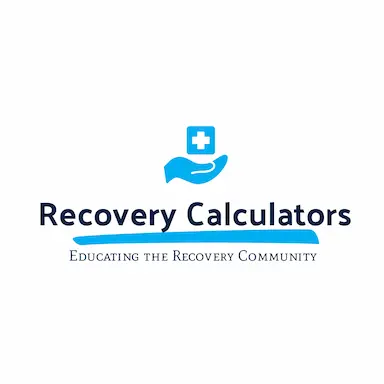Understanding the effects of alcohol and marijuana is more important than ever. These substances affect the body and brain in very different ways. Yet both can seriously impair your judgment, coordination, and decision-making.
Whether you’re navigating social situations or making choices about your health, it’s important to understand how these substances work and how they differ. So, what’s the difference between being drunk vs. high?
This article explores the differences between being drunk and being high, the health risks, and the serious implications of driving under the influence of marijuana versus driving drunk.
Questions answered in this article:
Our Alcohol Addiction Treatment Centers

Scottsdale Rehab
Luxury Personalized Rehab

HART Rehab
Holistic Luxury Personalized Rehab

Scottsdale Detox
Luxury Medical Detox
Key Differences Between Being Drunk and Being High
Alcohol and marijuana are two of the most commonly used substances worldwide. Both can alter your mood, perception, and behavior. But the ways they affect your body and mind are very different.
What Does It Mean to Be Drunk?
Alcohol intoxication occurs when you consume enough alcohol to impair your central nervous system. This slows down communication between your brain and body. As a result, your reaction time, coordination, and judgment all suffer. Common signs of being drunk include:
- Slurred speech
- Loss of balance
- Impaired motor skills
- Reduced inhibitions
- Confusion
- Shortened attention span
Alcohol intoxication can quickly lead to risky behaviors and poor decisions. Even small amounts of alcohol can negatively impact cognitive function and increase the risk of accidents.
Long-term effects of alcohol use include memory problems, increased risk of depression and anxiety, liver damage, and higher risk of cancer. Alcohol abuse over time increases the risk of heart disease and stroke. These long-term consequences show why it’s vital to moderate alcohol intake.
What Does It Mean to Be High?
Being high usually refers to the effects of consuming marijuana. The main psychoactive ingredient in cannabis is THC, which interacts with receptors in your brain. This alters your perception, mood, and motor skills. Common effects of being high include:
- Altered perception of time and senses
- Euphoria or relaxation
- Increased appetite
- Impaired coordination
- Difficulty with memory and attention
The impact of marijuana on your central nervous system is different from alcohol. Cannabis users often experience heightened sensory perception and changes in how they perceive time, but may also struggle with concentration and short-term memory.
Other long-term effects of marijuana use include lung irritation, mood disorders, and potential for addiction, especially with heavy use.
High vs. Drunk: Impact of Cannabis and Alcohol
Both alcohol and marijuana can impair motor skills and negatively impact cognitive function, but the way they do so is different. Alcohol intoxication often leads to slurred speech and more severe physical impairment, while marijuana impact is more pronounced in perception and memory.
Cannabis Effects
- Active Substance: Cannabis (THC or tetrahydrocannabinol)
- Effect on Central Nervous System: Alters neurotransmitter activity
- Speech: People usually don’t experience slurred speech.
- Motor Skills: Impaired, but often less than alcohol
- Perception: Altered perception of time, heightened senses
- Mood: Euphoria, relaxation, or possible anxiety
- Appetite: Users may experience increased appetite
- Memory: Short-term memory impairment is possible
- Physical Risks: Rare nausea, less severe aftereffects
- Aggression: Rare, people are more likely to experience anxiety
Alcohol Effects
- Active Substance: Alcohol
- Effect on Central Nervous System: Depressant, slows down brain-body communication
- Speech: Slurred speech is common
- Motor Skills: Severely impaired
- Perception: Blurred, delayed reactions
- Mood: Disinhibition and mood swings
- Appetite: May decrease or stay the same
- Memory: Blackouts are possible, and forgetfulness is common
- Physical Risks: Nausea, vomiting, hangover
- Aggression: Increased risk, people may exhibit violent behavior
Impact on Central Nervous System
Alcohol acts as a depressant on your central nervous system. It slows down the messages between your brain and muscles, making it harder to react quickly and control your body.
This is why consuming alcohol can lead to slurred speech, poor coordination, and delayed reaction times. The more you drink, the more these effects increase, making activities like driving extremely dangerous.
Marijuana, on the other hand, changes how your brain processes information. THC binds to cannabinoid receptors, altering mood, memory, and perception.
Cannabis users may feel relaxed or euphoric, but also experience slower thinking and impaired coordination. The impact of cannabis on the central nervous system can make tasks that require focus and quick reactions, like driving, much more risky.
Is Driving High as Dangerous as Driving Drunk?
A major concern today is whether driving under the influence of marijuana is as dangerous as driving drunk. The short answer? Both are risky and can have life-threatening consequences.
Driving Drunk:
- Alcohol slows reaction time
- Blurs vision
- Causes slurred speech and confusion
- Severely impairs decision-making
Studies show that driving drunk dramatically increases accident risk. Alcohol can cause people to drive too fast, miss signals, and misjudge distance.
Driving High:
- THC impairs attention and coordination
- Can lead to lane weaving and slow reaction
- May cause anxiety or panic, affecting control
While some cannabis users claim they drive better while high, research does not support this. In fact, the impact of cannabis on brain function while driving is unpredictable and unsafe. Combining alcohol and marijuana only increases the risk further.
Many states now have strict laws penalizing driving under the influence of marijuana, just like they do for alcohol.
Dangers of Mixing Marijuana and Alcohol
Using both substances at the same time can amplify their negative effects. Alcohol can increase the absorption of THC, leading to extreme dizziness, vomiting, or blackouts. The combination can seriously impair motor skills and judgment.
Mixing alcohol and marijuana not only increases the risk of injury or overdose, but also makes it harder to recognize the effects of each drug.
Drunk vs. High: Importance of Safety
Both alcohol and marijuana affect your central nervous system, but in different ways. Alcohol intoxication often leads to slurred speech, impaired motor skills, and increased risk of risky behavior. Marijuana impact is more focused on altered perception of time, memory, and coordination.
Both substances carry health risks, especially with long-term use. Alcohol abuse is linked to serious diseases and cognitive decline. Cannabis users may also experience negative impacts on mental health and cognitive function.
Driving under the influence of marijuana or alcohol increases the risk of accidents and injuries. The risk is even higher when both substances are used together. Always make safe choices and avoid driving if you are impaired.


